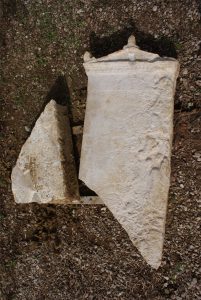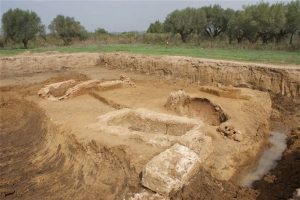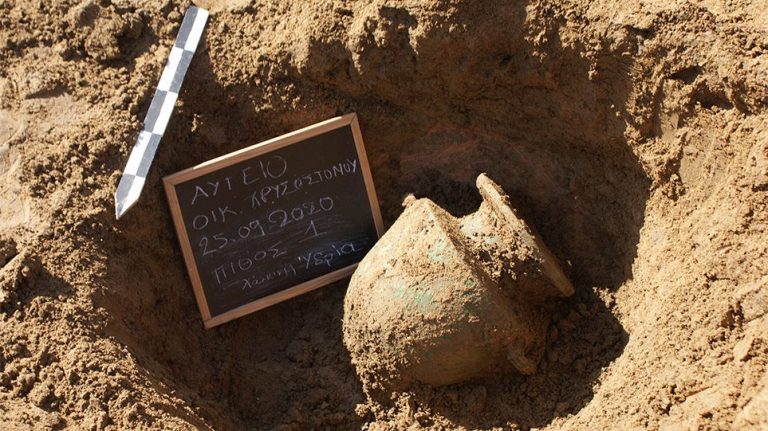Eight tombs of various types were unearthed and examined during a recent salvage excavation by the Ephorate of Antiquities of Ilia on a privately owned plot of land at the location “Droubes or Paliabela”.
According to the preliminary examination of their grave goods, the tombs date from the end of the 4th to the 2nd century BC. From the excavations, three burial pits, four box-shaped ones, and a tiled roof tomb came to light.
These tombs are part of the western necropolis of the ancient city of Elis in the northwestern corner of the Peloponnese, from which more than 200 tombs dating to the late classical and Hellenistic period have been excavated to date.
The findings of burial pit 1 are of particular interest as it includes a bronze urn with its base, which has a floral decoration on the handles and lion heads at the junction of the handles with the rim and a bronze folded mirror.
also read
The global maternal mortality rate (infographic)
U.S. Ambassador to Greece Pyatt: The path to the acquisition of the F-35 is a multi-year process
Based on initial assessments of the grave goods, the burial pit dates to the end of the 4th to the beginning of the 3rd BC.
Apart from a large number of vases from the Hellenistic period mainly, a marble tombstone with a pediment stands out from the findings of the other tombs.



Ask me anything
Explore related questions





